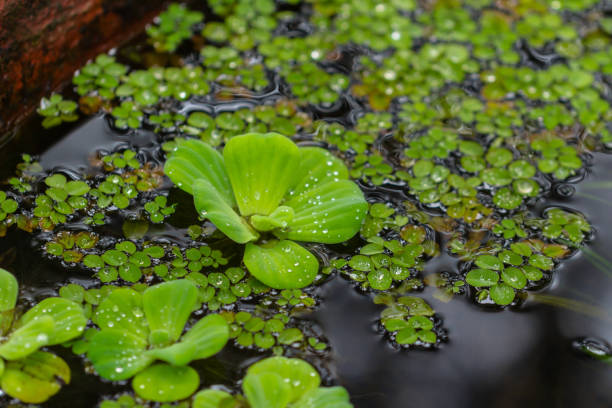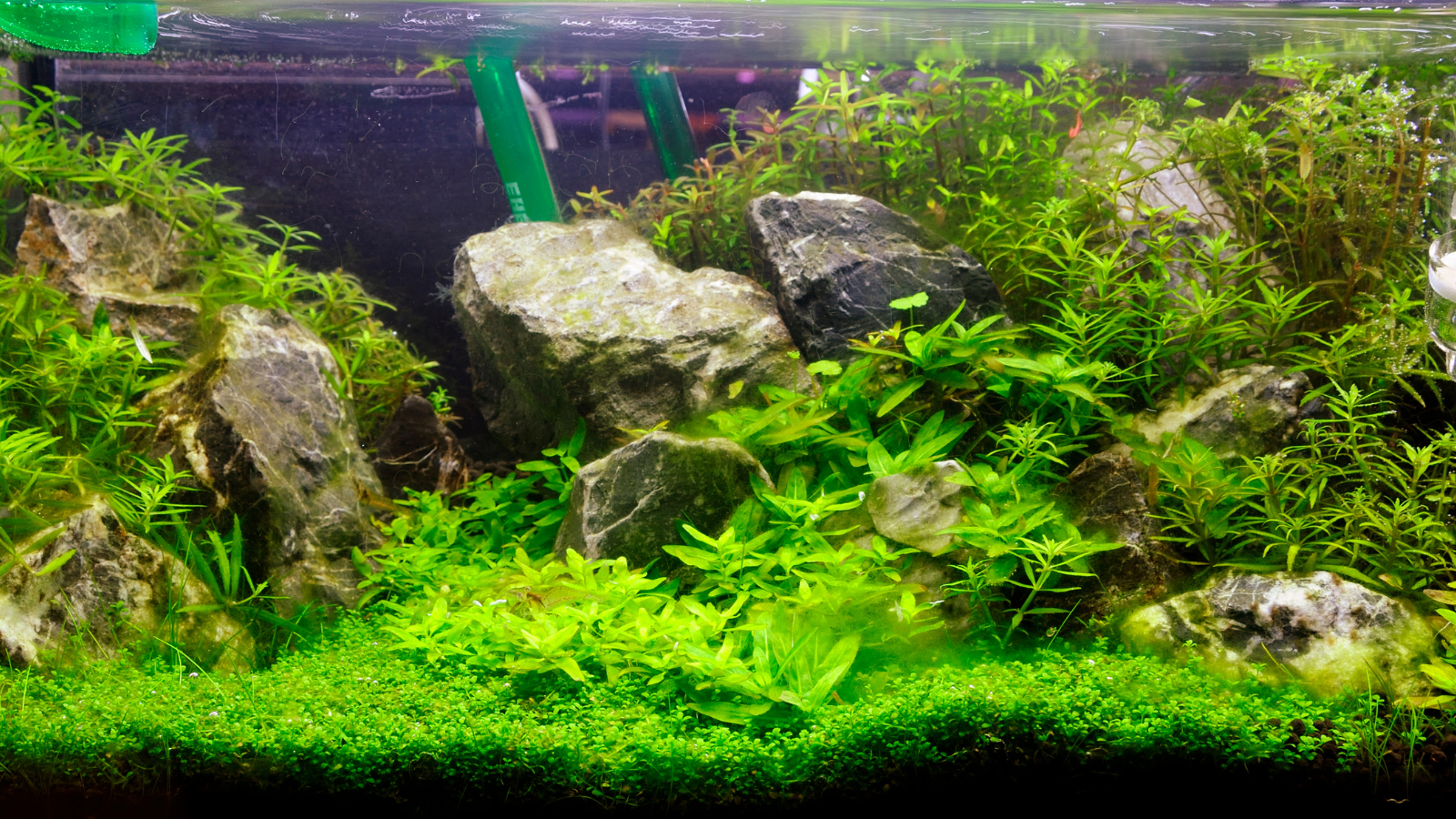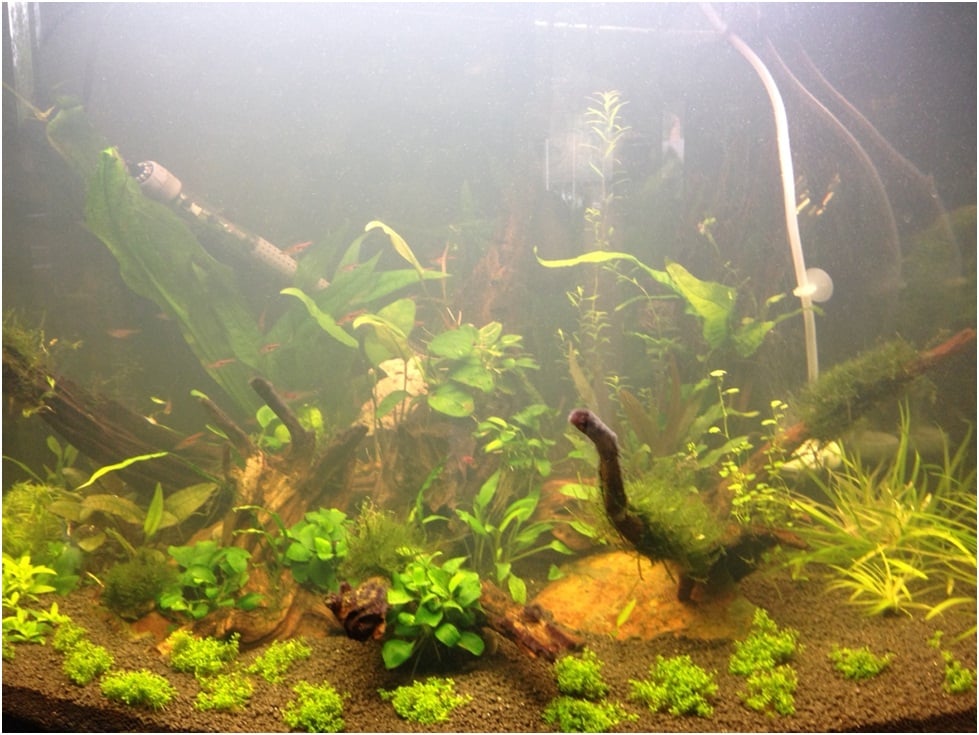
It happens that the lighting in the aquarium is too strong and needs to be shaded. This can be beneficial for fish - species that like less light exposure. In this case (and not only), floating aquarium plants work well. Which species are worth choosing? Below we present the list of 5 the most recommended floating plants by CO2Art Experts.
How to arrange floating plants?
Plants that float on the surface of the water mirror, apart from the above-mentioned function, provide more arrangement options. The slightly shaded tank, which shows green on the surface, looks more natural. Plants also indirectly fight algae. They are hiding places for smaller fish, and sometimes even "platforms" for building nests. However, you have to be careful - floating plants grow excessively. They can also burn, so it is worth pouring a little less water into the tank than normal. If possible, it is also recommended to use lighting that does not cause excessive heating of the air between the cover and the water surface. The list of floating species for aquarium purposes is shorter in comparison to traditional ones, planted in the ground or attached to permanent elements. However, you can still try an interesting arrangement. Here it is better not to overdo the variety, placing no more than 1-2 species on the surface.
Aquarium floating plants
Duckweed (Lemna minor) is one of the most popular floating plants, used in aquarium hobby from its beginnings. A single copy is 3-5 mm wide. The leaf blade is made of several miniature leaves. In its center there is a root, which is responsible not only for the uptake of nutrients, but also for the stable floating of the plant on the surface. It happens that the duckweed blooms, but it is not common. The species grows well in a wide temperature range (15-33 ° C) and is therefore suitable for both coldwater and tropical aquariums. It is distinguished by a fast growth rate - it must be monitored on an ongoing basis. It has quite high lighting requirements. Effectively absorbs nitrates. It can be food for herbivorous fish.
The water lettuce (Pistia Stratiotes) which is so-called due to its striking appearance, and also Nile lettuce due to its origin. It grows up to 10 cm. It produces fleshy, suede, light green leaves that form characteristic rosettes. Its roots are delicate, but long and dense. They also have great decorative value. At the same time, they are a great, safe hiding place for fry. The plant can bloom - the flowers are tiny, yellow, growing on an inflorescence shoot. The water lettuce is an expansive and invasive species (its cultivation is prohibited in some parts of the world). It is harmless in an aquarium for a simple reason - it will not go beyond its limits. The treatment is similar to that of duckweed, from time to time you need to catch some of the plants. It grows best in warmth (optimal temperature is 25-27 ° C). It performs well in both soft and hard water. It likes humid conditions, but is sensitive to moisture that condenses on the leaves. The leaf blades can then be affected by diseases, as a result they turn yellow, brown and die.
Floating fern (Salvinia natans) - is a fern naturally occurring in Africa, Central Europe, Asia and South America but was introduced into almost every part of the world. Like duckweed, it can be grown in a wide temperature range (12-30 ° C) and is therefore also suitable for coldwater aquariums. It has one major drawback - it is an annual plant. That is why in tanks it is mainly decorated in summer, in winter it usually dies. The spores hibernate in the substrate and float to the surface in spring. Salvinia produces round or elliptical water leaves and root-like underwater leaves. There are fine hairs on the leaves. The plant provides a good shelter for fish. It is quite demanding - you need to feed it with multi-component fertilizers.
The floating crystalwort (Riccia fluitans) is a species of liverwort that can be grown in two ways. The plant sometimes attaches to the substrate or aquarium objects (e.g. roots). At the same time, it can swim freely, floating close to the surface. It creates characteristic spheres or carpets composed of small, light green, sticky thallus. It can be destroyed by some herbivores, omnivores or just curious fish. It tolerates a wide temperature range (10-30 ° C). Swimming specimens do well in normally lit aquariums. Those placed at the bottom should be provided with intense lighting. It likes soft waters. It cleans the tank well from excess nitrates and phosphates. It is a shelter for fry. Labyrinth fish use it to build nests. Care must be taken with excessive expansion so that the dense floating crystalwort coating does not reduce the water-air gas exchange.
The Amazon frogbit (Limnobium laevigatum) produces rosettes composed of heart-shaped leaves up to 3 centimeters in diameter. If the water has enough nutrients and good lighting, new leaves appear on the surface of the water and above it, and the layer can be up to 5 cm long. It creates long roots that provide good shelter for dwarfs and other fish that like to be among the roots of floating plants. The lower part of the mat formed by floating plants is not decorative in the aquarium, but without a decorative effect it is impossible to achieve uniform growth throughout the year in the aquarium. Limnobium can be grown in a tropical aquarium at a temperature of 20 to 30 ° C. In cooler water, it significantly slows down its growth. It grows slightly better in soft water. Water hardness not more than 10-12 °, pH does not matter, pH 6.0-7.5. It needs a layer of warm and humid air above the water surface. Regular water changes are desirable, but the plant itself feels better in old water.
To sum up, floating plants are not only the decorative element of the planted tank but also a helpful one. Remember that different species of fish have different lightning requirements and by using floating plants you can partially shade your aquarium to improve its inhabitants lives!


